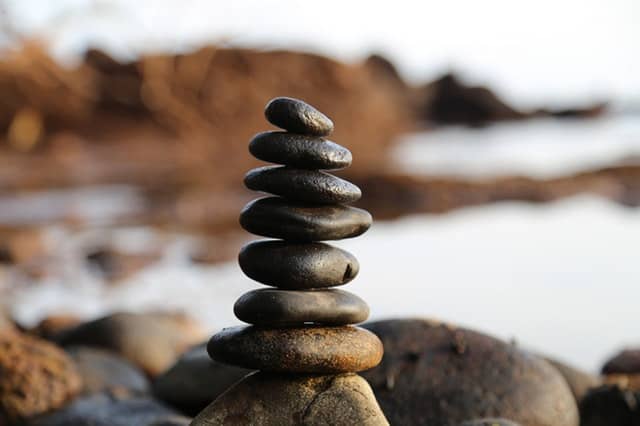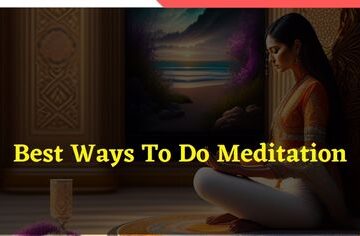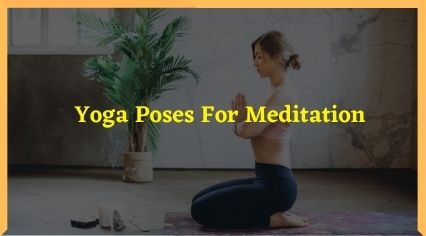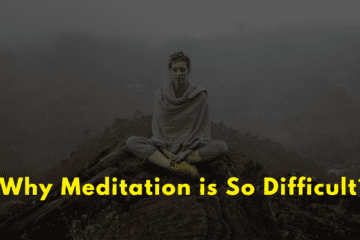Meditation for the Beginners |Part 3

Hello from beautiful New York, America and welcome to the final part of this three-part Meditation for the Beginners series.
If you’ve missed parts one or two of the meditation techniques for beginners I will link those both for you right below.
Meditation for the Beginners |Part 1
Meditation for the Beginners |Part 2
Read them before you get started on this one.

Meditation for the Beginners
Now let’s continue where we left off let’s revise again, find a comfortable seated position, bring the focus to the rise and fall of the abdomen and if sensations or thoughts arises just observe them let it pass and return to the breath.
But what happens now is, if you’re in some kind of discomfort maybe your leg is starting to go numb or something is irritating your throat and you want to COFF,
so what do you do, ideally you name the sensation as we did before and let the feeling pass.
(Must see: 7 Minute Meditation to achieve everything you want)
Numbing or tickling sensations often do pass but with that said as a beginner you might not want to sit through such discomfort.
So for those of us who are new to Meditation we’re going to learn how to move one in a seated position with intention and the keyword here being is intention.
So let’s use an example you are focusing on the breath in and out and suddenly this gets interrupted by a tickling sensation on your nose from a stray piece of hair.
You label this feeling or tickling of nose, again there’s no right or wrong labels to use, you are just using the labels to guide you in becoming more aware and mindful in the present moment.

So you observe the sensation and continue to name it.
(Best books to read)
Waiting for the feeling to pass but after some time it just won’t go away and you make the decision to move it but you will name this decision intention intention intention.
So basically you are honouring the intention to do something which in this case is to move that piece of hair off your nose.
Now that you’ve silently stated the intention you don’t just go ahead and move it instead,
you intentionally move labeling and feeling every motion as your hand makes its way from your lap to your nose labeling lifting lifting lifting as your arm makes its way very slowly.w
We will break apart every movement into a series of smaller steps labeling as you go along.
So for example feeling the weight of gravity on your arm and when the hand makes contact with a straight piece of hair you can label it contact.
Then you continue to feel and name all sensations as you move the piece of hair away from the face, then as the hand lowers back to the lap and as you feel every movement as it slowly moves down, you name it lowering.
When all is said and done observe your sensations and feelings for a moment then return to the breath and as always rising rising rising and falling falling falling.
This practice can also be applied if you realize you’re no longer sitting in an upright position.
Maybe you have noticed that you are arching your back or you want to elongate your spine again you don’t just pop up and let it be done,
just like that you do it instead mindfully placing the intention to do so in feeling every vertebra stack on top of one another as you gracefully lift the crown of your head towards the sky and gently tuck in the chin.
Remember that with meditation everything is mindful and intentional.
Now a question commonly asked is How long should I meditate?
I don’t think that there’s necessarily a right or wrong answer to this.
I would say pick any amount of time that seems reasonable to you so if you’re just starting out 5 or 10 minutes at a time is admirable and you can always increase the frequency and the duration.
That if you are meditating once you get a little bit more comfortable with it.
Now I will be completely honest and say I don’t make time for seated meditation every day but I’m absolutely mindful every day in the way that I go about my day-to-day activities.
Because I bring those lessons and techniques that I learned in meditation along with me and I feel it this is how meditation has helped me above all else.
So for example, if I’m stressed out because of an upcoming deadline I remind myself to become aware of my breath, identify my thoughts and feelings as being stressed.
But I make sure that is should not name myself as a stressed person,rather I take a moment to stop, look and put an intention before I set out to do anything else.

What I am doing mundane activity is like cleaning around the house I try to tune into the sensations and feelings.
So for example, if I am doing the dishes I take the time to enjoy that moment feeling the warmth of the water and the slipperiness of the soap.
So you can see how learning these techniques can help you far beyond the five or ten minutes.
You dedicate to seated meditation all right so this concludes our three-part Meditation for the beginners series.
I hope that you get a chance to put some of these techniques into practice and that you find it as helpful as I know I did.
I am gonna sign off by Saying Namaste as my teacher always used to say this at the end of every session.
I have shared earlier What is the meaning of Namaste?
Share your experience in the comment section below after practising this.



4 Comments
Meditation for the Beginners |Part 2 – Yogabicep Vipassana Meditation · at
[…] Meditation for the Beginners |Part 3 […]
What is Meditation? |Meditation– Yogabicep · at
[…] Meditation for the Beginners |Part 3 […]
The Secret Mantra In Transcendental Meditation?Want To Know? 2020 · at
[…] Meditation for the Beginners series |3 […]
Meditation For The Beginners |Part 1 • Vipassana Meditation · at
[…] Meditation for Beginners | Part 3. […]